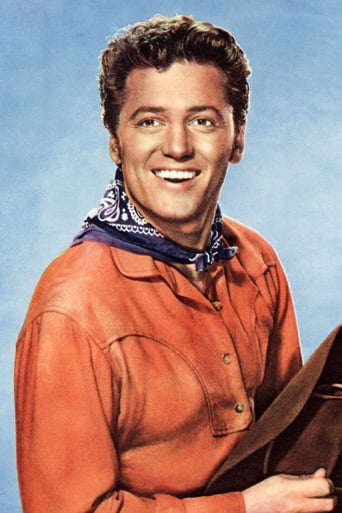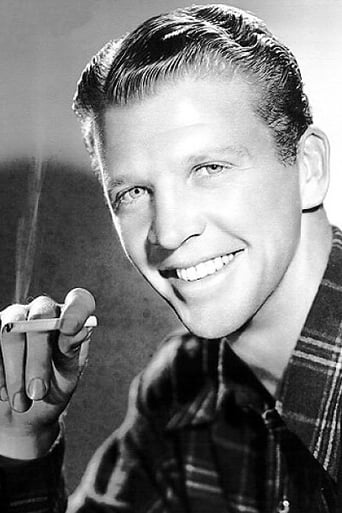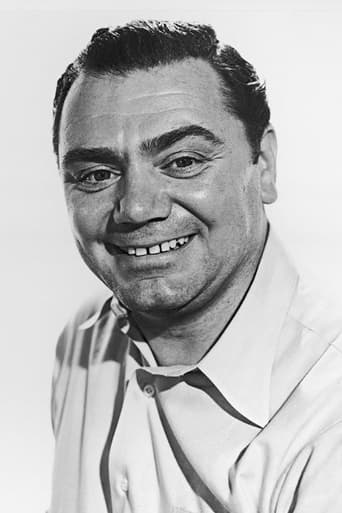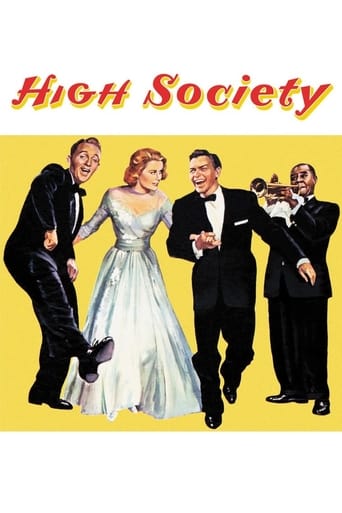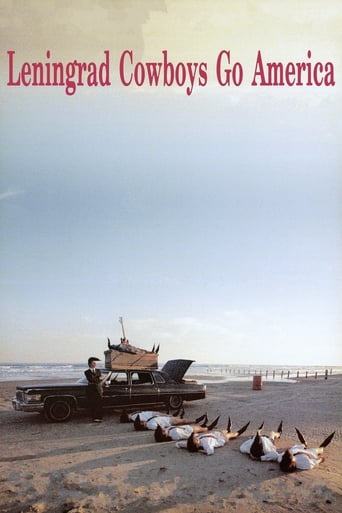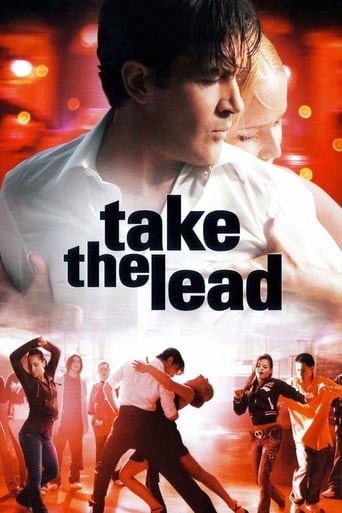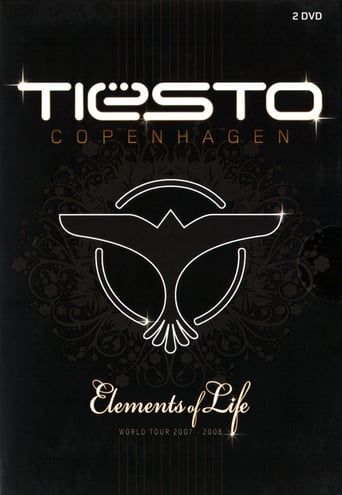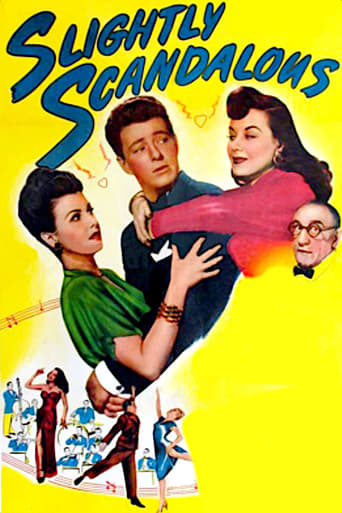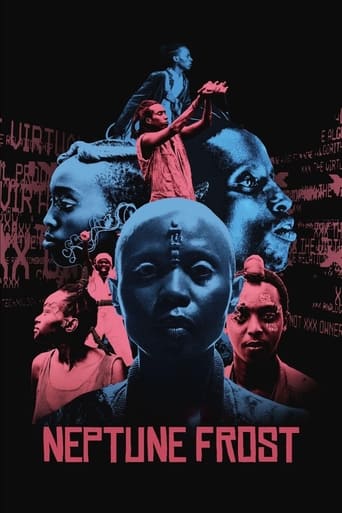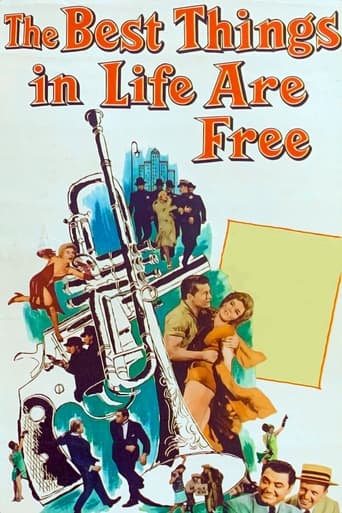
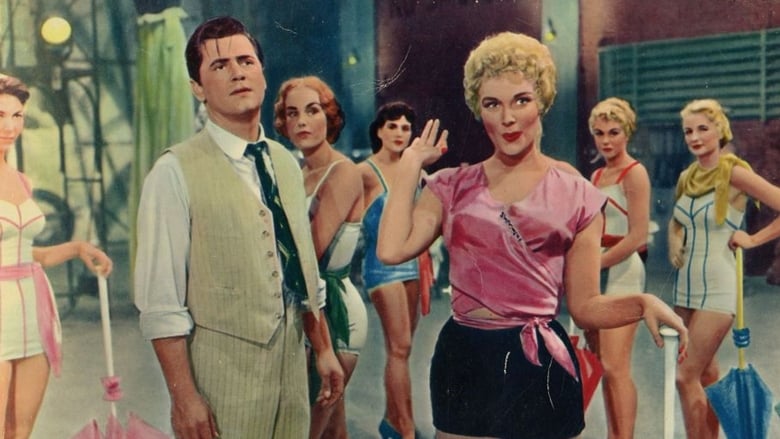
The Best Things in Life Are Free (1956)
Ray Henderson joins Buddy De Sylva and Lew Brown to form a successful 1920s musical show writing team. They soon have several hits on Broadway but De Sylva's personal ambition leads to friction as the other two increasingly feel left out of things.
Watch Trailer
Cast


Similar titles
Reviews
Dan Dailey as Ray Henderson, Gordon Macrae as Buddy De Sylva, and Ernest Borgnine as Lew Brown, were born to play these roles.The Best Things in life are free, captures the 1920's superbly. And I would have loved to have been a fly on the wall when these three writers were coming up with their never to be forgotten song standards.Hollywood churned out many biog's of their songwriters in the 40's and 50's, and this is by far the most entertaining, and interesting. I disagree with every negative review.When is comes to all of America's great songwriters from the past, I'm betting that the average American could not put the songwriters name to their favorite song from the 20's 30's and 40's. And this is a crime.From Tin Pan Alley, to the great depression in 1929, and the Hollywood musical when most songwriters left New York to work in the Hollywood factory's to write up the great musicals that are still enjoyed today, these songwriters have been largely forgotten when it comes to the songs they wrote.I'm an Englishman aged 65 on April 10th 2013, and I've studied the lives and works of the Great American songwriters since my late teens. And I believe that all Americans should know the name of the songwriters or writers who composed their favorite song standard.Henderson, De-Silva and Brown, were indeed up there with Cole Porter, George and Ira Gershwin, Rodgers and Hart, Irving Berlin etc. What a legacy these writers and more, have left to the world in the finest songs ever written.
I thought the chemistry among the three leads - Gordon McRae as Buddy De Sylva, Dan Dailey as Ray Henderson, and Ernest Borgnine as Lew Brown - was absolutely perfect even if not necessarily true. Probably the hardest thing to take at first is the excessively caustic nature of Borgnine's portrayal of Lew Brown until you get to know a little more about Lew, his background, and his friends and then things begin to make sense. There's a good contrast of personalities here - De Sylva civilized but selfish versus the street-wise loud and rude Brown who'd put it all on the line for a friend. Henderson's gentle family man play-for-keeps style versus De Sylva's flavor-of-the-month attitude towards women. I don't know if any of this was true, but as cinema I liked it.Knowing something about the early talkie musicals and the composers behind them, some things did bother me. At one point the film has the three going out to Hollywood to work on the 1929 early talkie musical "Sunnyside Up". This was largely a homespun little film in the tradition of the early Fox musicals with even a harpsichord number included. Instead, what we see on the set is an elaborate fan-dance like number with a man in a tuxedo singing "If I Had a Talking Picture of You" accompanied by dancing girls with long red boas. This is not how I remember Charles Farrell singing this one. In fact, if there is one big complaint I have is that the songs are pure 20's but the choreography and tempo of the numbers are like something out of an MGM musical ballet with Gene Kelly that would have been popular at the time of the film's release - 1956.The key to enjoying this film is to focus on the beautiful music, good performances, and the pleasant nature of the story. Do that and I think you'll like it. I don't think this was ever intended to be a serious biopic.
Michael Curtiz's 1956 film "The Best Things in Life are Free" was frequently shown on Chicago television in the 1960s. I had not seen the film until it was recently broadcast on the Fox Movie Channel. Unfortunately, it was not a letterboxed print, so it was very difficult to determine the film's merits as it had the left and right margins entirely cut off. That aside, I think it was an attempt at a darkish musical with Curtiz touches and this was reflected in the script.The film is entirely done on soundstages, no exteriors at all, so it feels kind of clunky, as many of the early Cinemascope films were as well.I liked the actors, especially the wonderful actor and dancer Sheree North. Her best number, "Black Bottom", was badly impacted by the lack of a letterboxed print. She was very fortunate to be partnered by one of George Balanchine's finest male dancers, Jacques d'Amboise, photographed here in his dancing prime. Lucky Sheree North! Dancer (and future partner of Fred Astaire) Barrie Chase is also featured in the film.I was amused by Ernest Borgnine's dancing, singing and acting, puzzled by Dan Dailey's lack of dancing, and liked Gordon MacRae, who played Buddy daSylva. I liked the film, and hope to see a letterboxed print in the future.
Unlike most of today's audiences, I'm not 'alergic' to an old-fashioned Hollywood musical. Just last week, I saw "The Best Things In Life Are Free" for the first time in 15 years. It is disappointing - but not so much for what it is, but rather what it could have been: a classic. And considering the talent involved on-screen, I'd lay most of the blame at the feet of the director and the 'bean-counters'.Fluidity and pacing are critical in a musical, and I think the direction and staging is a big issue in "The Best Things...". For example, with the exception of the 'Birth of the Blues' number, the camera feels almost nailed to the floor. By comparison, despite the raucous, finger snapping music and Sheree North's vivacious hoofing, the other big production number 'Black Bottom' feels oddly 'constrained' and 'flat' (almost one-dimensional). The musical numbers scroll by as if on a player-piano roll, with little cinematic depth or texture - despite lively action performed by talented people.In my humble opinion, "Best Things..." has all the ingredients to make a great musical, but they somehow 'taste' like the 'generic-brand' as opposed to Grade-A fancy. This is even more strange upon looking at the 'brand names' utilized: the Set Decorations were by the same team as created the sumptuous "Daddy Long Legs" and "The King and I"(!). Costume Direction was by Charles LeMaire(!). The musical numbers were directed by John de Cuir ("No Business Like Show Business" and "Call Me Madame"). And lest we forget, director Michael Curtiz is the man who gave us "Casablanca," "Yankee Doodle Dandy," "Mildred Pierce," and just two years before, "White Christmas." While decidedly nearing the end of his career, Curtiz still had Elvis' "King Creole" and a few other decent films ahead of him.So..., the ingredients of an "A-list" picture were decidedly in evidence. I lay the blame at the feet of penny-pinching executives. Having lavished so much money on sets,costumes and Cinemascope, "Best Things..." registers as if executives decided in mid-production to cut back on what was originally intended to be an 'A-picture'. But as opposed to a vehicle with truly great music or Broadway pedigree, the 'substance' IS the 'spectacle' in a movie like "Best Things...", and somebody cut WAY back on the 'spectacle'.Perfect Example: MGM's "Meet Me in Las Vegas" was released this same year (and ALSO starring Dan Dailey). But "Meet Me..." had the glamorous cameo's (Sinatra, Debbie Reynolds, Vic Damone...) and 'guest artists' (Lena Horne, Frankie Laine, Sammy Davis, Jr) that one expects of a musical of this kind.In "Best Things...," this kind of 'sparkle' is curiously absent. Instead, the best thing "The Best Thing..." trots out is a bit-player in black-face(!) impersonating Al Jolson(!) Huh...? In 1956, Fox had contracts and/or 'relationships' with a number of great performers who, with just a bit of thought, could have been brought in to do some interesting '20's themed cameos: imagine JOHNNIE RAY as an 'updated' "Jolson;" DOROTHY DANDRIDGE as (the early-career, sexy) "Ethel Waters" or "Florence Mills;" or how about JANE RUSSELL as "Helen Morgan" or "Ruth Etting" (a role she regretted turning down a year earlier in MGM's "Love Me or Leave Me")? What fun that would've been...!?While DeSylva, Brown & Henderson's work may not be of the caliber of Porter, Gershwin, Ellington and Coward (properly pronounced 'C-AAhhwd' - lol), the boisterous score is certainly evocative of the roaring '20's. Charles LaMare's costumes are dazzling and fun. Appearing in his last film (before choosing to retire to concentrate on supper clubs and a lucrative career as a popular TV host), one remembers what a great voice Gordon McRae had. And its fun to see somebody BESIDES 'Marilyn,' or 'Jayne' in the female lead of a splashy fifties musical, Sheree North being quite an accomplished Broadway dancer, as evidenced by her top-notch performance with Balanchine ballet dancer Jacques D'ambroise in this film's 'Birth of the Blues' number (this scorching-hot fifties movie-musical number is, sadly, largely forgotten as it is buried within this film...).A classic? Heck no. Still, I think "Best Things..." has 'good bones', and isn't the worst way one could while away a rainy afternoon getting lost in some old fashioned celluloid tinsel.


